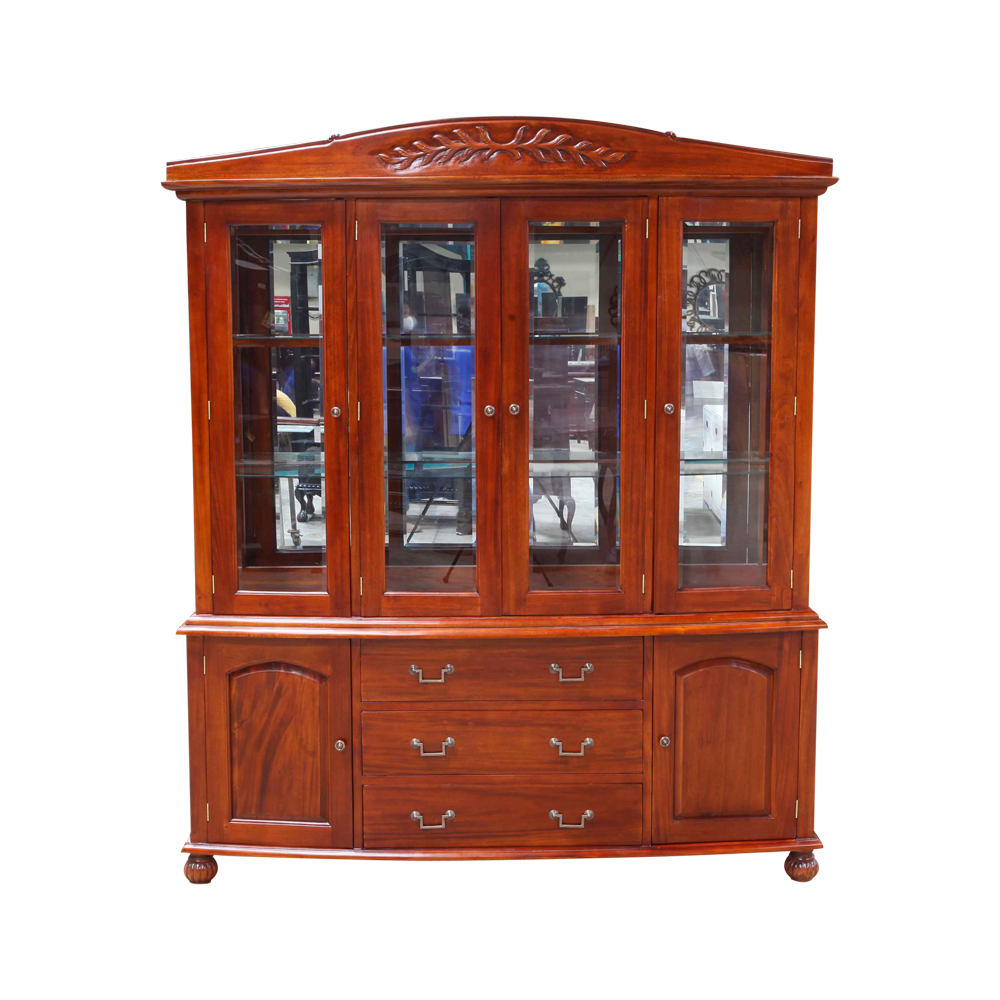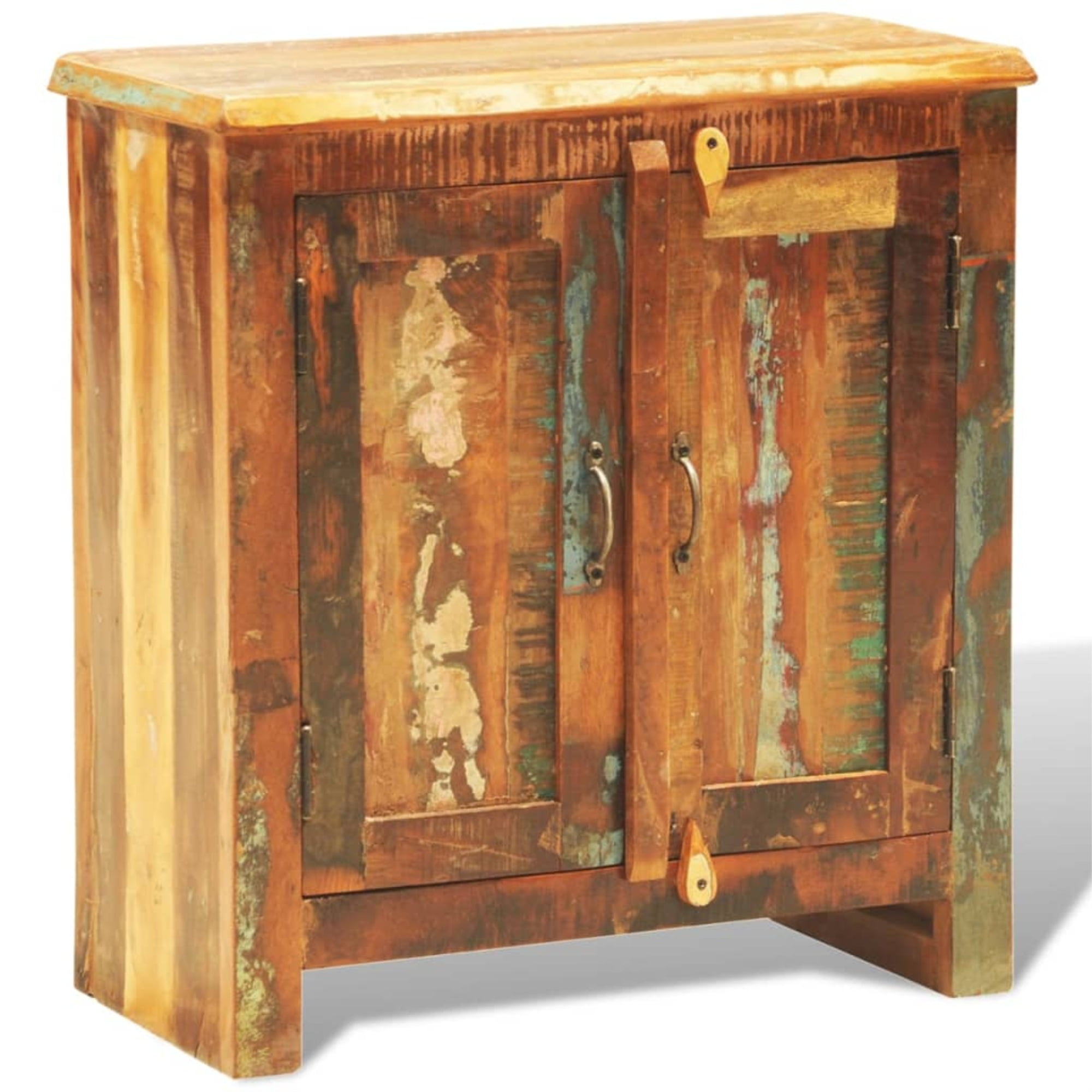The Appeal of Vintage Solid Wood Cabinets

Vintage solid wood cabinets have an enduring appeal in modern interiors, transcending fleeting trends and embodying a timeless elegance that resonates across generations. Their enduring popularity stems from a confluence of factors, including their historical context, exceptional craftsmanship, and aesthetic versatility.
The Historical Context and Craftsmanship, Vintage solid wood cabinet
Vintage solid wood cabinets often represent a bygone era of meticulous craftsmanship, where quality and durability were paramount. They were built to last, using time-honored techniques and high-quality materials that have stood the test of time. These cabinets are not merely furniture pieces; they are tangible artifacts that tell stories of their past, whispering tales of the people who crafted them and the homes they graced.
The Aesthetic Qualities of Vintage Cabinets
Vintage cabinets often possess a distinct charm that contemporary furniture designs often struggle to replicate. The natural beauty of solid wood, with its unique grain patterns and warm tones, adds a touch of warmth and authenticity to any space. The craftsmanship evident in hand-carved details, intricate joinery, and aged finishes creates a sense of history and character that cannot be replicated with mass-produced furniture.
Integrating Vintage Cabinets into Different Interior Styles
Vintage solid wood cabinets are remarkably versatile and can seamlessly integrate into a wide range of interior styles. A vintage cabinet with a rustic finish can add a touch of farmhouse charm to a modern kitchen, while a sleek mid-century cabinet can complement a minimalist living room.
- Traditional Interiors: Vintage cabinets with ornate carvings and dark wood finishes enhance the classic elegance of traditional interiors. Their presence adds a sense of history and sophistication, complementing antique furniture and rich fabrics.
- Modern Interiors: Vintage cabinets can introduce a touch of warmth and character to minimalist modern spaces. The contrast between the natural wood and clean lines creates a balanced and sophisticated aesthetic.
- Industrial Interiors: Vintage cabinets with distressed finishes and metal hardware can complement the raw and edgy aesthetic of industrial interiors. They provide a touch of warmth and contrast against the cool tones of metal and concrete.
Types and Styles of Vintage Solid Wood Cabinets

Vintage solid wood cabinets offer a timeless charm and enduring quality that adds character and sophistication to any space. These pieces are not just functional storage solutions but also works of art that tell a story of craftsmanship and design. From stately armoires to elegant buffets, each cabinet style reflects a distinct era and aesthetic, offering a glimpse into the past.
Types of Vintage Solid Wood Cabinets
Vintage solid wood cabinets come in a variety of styles and forms, each with its unique purpose and design elements. Here are some of the most common types:
- Dressers: These cabinets are primarily used for storing clothing and personal items. They typically feature multiple drawers and a flat top, often adorned with intricate carvings or hardware. Dressers can be found in various styles, from simple and functional to ornate and elaborate.
- Armoires: Armoires are large, freestanding cabinets that were originally designed to store clothing and other valuables. They typically have a hinged door, often with decorative panels or glass inserts, and may include shelves, drawers, and a hanging space. Armoires are often found in traditional and antique styles, adding a touch of grandeur to any room.
- Buffets: Buffets are a type of sideboard designed for serving food and drinks. They typically have a large, flat top surface, multiple drawers, and a cabinet section for storing dishes and linens. Buffets are often found in dining rooms or kitchens, adding a touch of elegance and functionality to the space.
- Sideboards: Sideboards are similar to buffets, but they may have a smaller footprint and fewer drawers. They are often used for displaying decorative items, serving food, or storing linens. Sideboards can be found in various styles, from simple and modern to ornate and antique.
Styles of Vintage Solid Wood Cabinets
The style of a vintage solid wood cabinet is often determined by the era in which it was made. Each style has its own distinctive features, materials, and construction techniques.
| Style | Distinctive Features | Examples |
|---|---|---|
| Victorian | Ornate carvings, intricate details, dark wood finishes, heavy construction | Dressers with elaborate carvings, armoires with ornate doors, sideboards with intricate detailing |
| Art Deco | Geometric patterns, sleek lines, bold colors, metallic accents | Buffets with geometric patterns, armoires with streamlined designs, dressers with metallic hardware |
| Mid-Century Modern | Simple lines, clean designs, natural wood finishes, minimalist aesthetic | Sideboards with tapered legs, dressers with simple drawer pulls, armoires with sleek silhouettes |
Materials and Construction Techniques
Vintage solid wood cabinets were often made from high-quality materials and built to last. Some common materials include:
- Oak: A strong and durable hardwood with a distinctive grain pattern.
- Mahogany: A rich and luxurious hardwood with a reddish-brown hue.
- Cherry: A beautiful hardwood with a warm reddish-brown color that darkens with age.
- Walnut: A strong and durable hardwood with a distinctive dark brown color and a rich grain pattern.
Vintage cabinet makers used a variety of techniques to construct these pieces, including:
- Mortise and tenon joints: A strong and durable joint that uses a hole (mortise) and a projecting piece (tenon) to create a secure connection.
- Dovetail joints: A strong and decorative joint that uses interlocking dovetail shapes to create a secure connection.
- Hand-cut details: Many vintage cabinets feature hand-cut details, such as carvings, moldings, and inlays, which add to their beauty and craftsmanship.
Complementing Interior Design Themes
Vintage solid wood cabinets can complement a wide range of interior design themes, from traditional to modern. Here are some examples:
- Victorian: An ornate Victorian armoire can add a touch of grandeur to a traditional living room or bedroom.
- Mid-Century Modern: A sleek mid-century modern sideboard can add a touch of sophistication to a contemporary dining room or living room.
- Farmhouse: A rustic farmhouse buffet can add warmth and charm to a kitchen or dining room.
Restoring and Maintaining Vintage Solid Wood Cabinets

Breathing life back into a vintage solid wood cabinet is a rewarding experience, allowing you to appreciate its history and craftsmanship. Restoring and maintaining these cabinets involves a combination of meticulous care, specialized techniques, and a touch of patience.
Cleaning Vintage Solid Wood Cabinets
Cleaning is the first step in restoring a vintage solid wood cabinet. It removes dust, grime, and any accumulated residue, preparing the surface for further treatment.
- Dusting: Start by dusting the cabinet with a soft, dry cloth or a feather duster to remove loose debris.
- Vacuuming: Use a vacuum cleaner with a soft brush attachment to reach crevices and corners.
- Cleaning with Mild Soap: For deeper cleaning, use a mild soap solution mixed with warm water. Apply the solution to a soft cloth and gently wipe the cabinet’s surface. Avoid using harsh chemicals or abrasive cleaners, as they can damage the finish.
Refinishing Vintage Solid Wood Cabinets
Refinishing a vintage solid wood cabinet involves removing the old finish and applying a new one. This process can revitalize the cabinet’s appearance and protect the wood.
- Stripping the Old Finish: Use a chemical stripper to remove the old finish. Apply the stripper according to the manufacturer’s instructions, ensuring adequate ventilation. After the stripper has worked, remove the old finish with a scraper or putty knife.
- Sanding: Sand the cabinet with progressively finer grits of sandpaper to smooth the surface and prepare it for the new finish. Start with a coarse grit to remove any remaining old finish, and gradually work your way to a fine grit for a smooth finish.
- Applying the New Finish: Apply the new finish according to the manufacturer’s instructions. Consider using a brush, roller, or spray gun for application. Allow the finish to dry completely between coats.
Repairing Vintage Solid Wood Cabinets
Vintage solid wood cabinets may have minor scratches, dents, or cracks. Repairing these imperfections can preserve the cabinet’s structural integrity and enhance its appearance.
- Filling Scratches and Dents: Use wood filler to fill in scratches and dents. Apply the filler with a putty knife and allow it to dry completely. Sand the filled areas smooth with fine-grit sandpaper.
- Repairing Cracks: Use wood glue to repair cracks. Apply the glue to both sides of the crack and clamp the pieces together until the glue dries. Sand the repaired area smooth.
Maintaining Vintage Solid Wood Cabinets
Maintaining a vintage solid wood cabinet ensures its longevity and preserves its beauty. Regular care can prevent damage and keep the cabinet looking its best.
- Dusting Regularly: Dust the cabinet regularly to prevent the accumulation of dirt and grime.
- Avoid Direct Sunlight: Prolonged exposure to direct sunlight can fade the finish and damage the wood. Position the cabinet in a location that receives indirect light.
- Protect from Moisture: Avoid placing the cabinet in humid environments or near sources of moisture. Moisture can warp the wood and damage the finish.
- Use Coasters and Placemats: Use coasters and placemats to protect the cabinet’s surface from spills and heat.
- Apply Polish or Wax: Apply a furniture polish or wax periodically to protect the finish and enhance its shine.
Identifying and Addressing Common Problems in Vintage Cabinets
Identifying and addressing common problems in vintage cabinets is essential for their preservation. Recognizing these issues early can prevent further damage.
- Loose Joints: If you notice loose joints, tighten them with wood glue or screws.
- Cracked or Chipped Finish: Repair cracked or chipped finishes by sanding the area smooth and applying a touch-up finish.
- Water Damage: If the cabinet shows signs of water damage, dry it thoroughly and address any structural issues.
- Insect Infestation: If you suspect insect infestation, consult a professional pest control specialist.
Using Appropriate Materials and Tools for Restoration and Maintenance
Using the right materials and tools is crucial for successful restoration and maintenance of vintage solid wood cabinets.
- Cleaning Supplies: Use mild soap, warm water, soft cloths, and a vacuum cleaner with a soft brush attachment for cleaning.
- Refinishing Supplies: Choose high-quality refinishing products, including chemical strippers, sandpaper, wood filler, and finish.
- Repair Supplies: Use wood glue, wood filler, clamps, and sandpaper for repairs.
- Maintenance Supplies: Use furniture polish, wax, coasters, and placemats for maintenance.
Vintage solid wood cabinets are super cool, adding a touch of rustic charm to any space. They’re perfect for storing your stuff, and they’re way more durable than those flimsy IKEA things. If you’re looking for a place to put all your vintage finds, maybe check out some one bedroom apartments east atlanta – you might find one with enough space for a killer vintage solid wood cabinet collection!
Vintage solid wood cabinets are like time capsules, holding stories of the past. They’re a statement piece that can add a touch of nostalgia to any space, even a modern one-bedroom apartment in Tijuana. Imagine a cozy, well-lit room with a vintage cabinet filled with your favorite trinkets, showcasing the unique character of your new home.
You can find amazing one-bedroom apartments in Tijuana here – and a vintage solid wood cabinet would be the perfect finishing touch to create a space that’s truly your own.